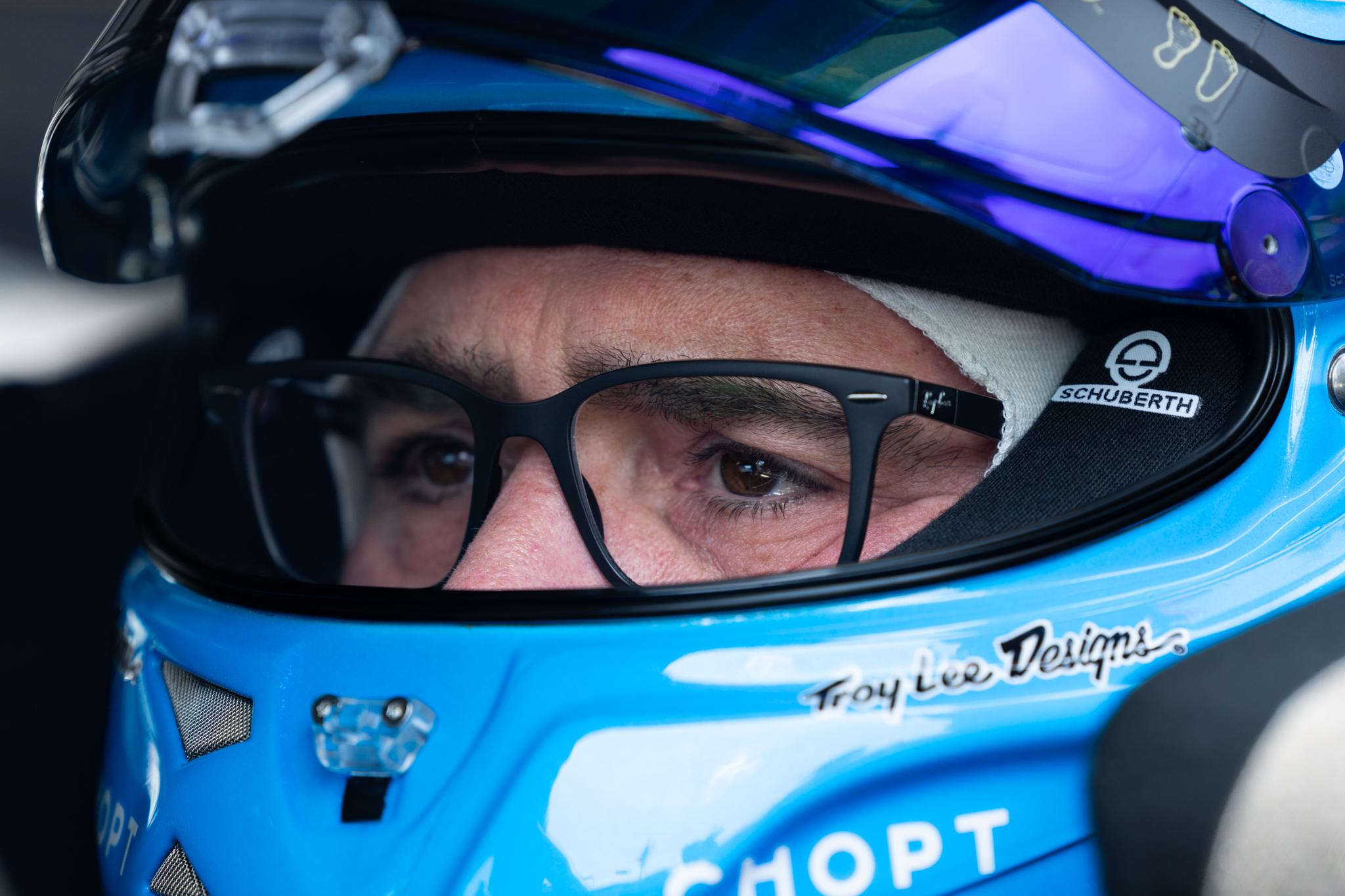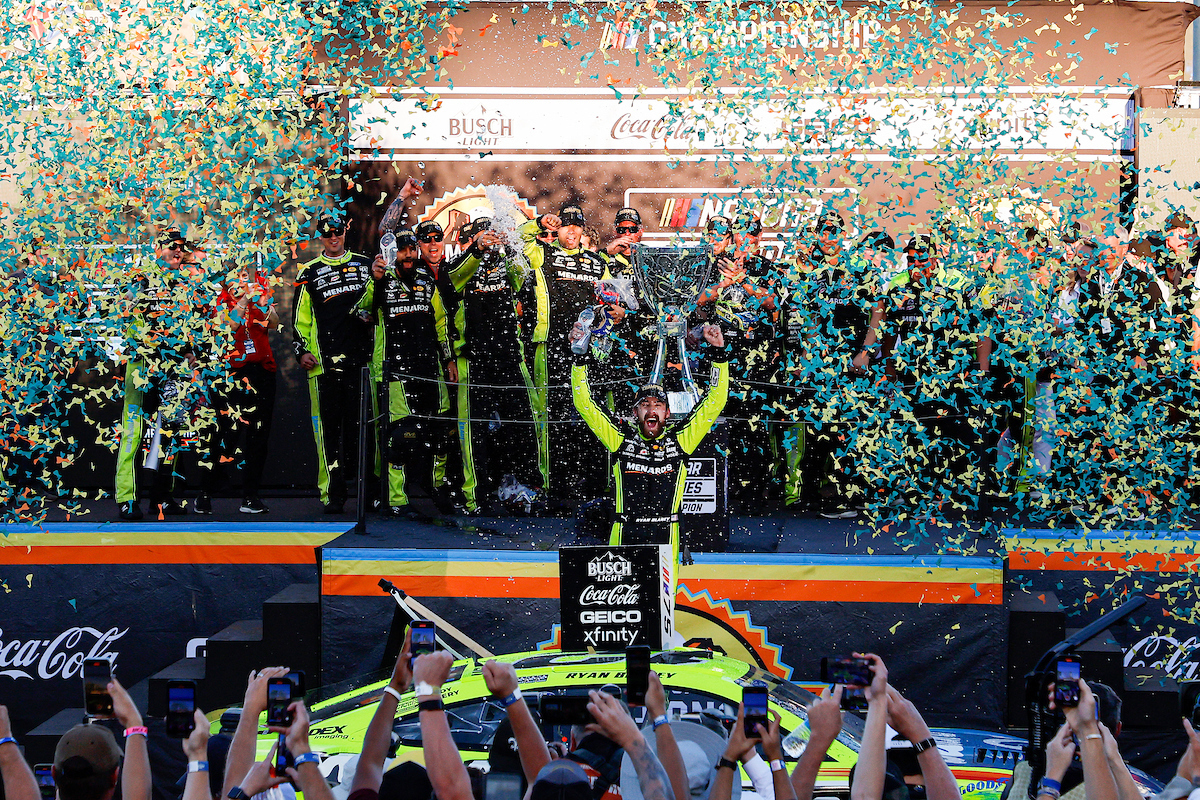What are the White Circles on NASCAR Windshields?


Observant NASCAR fans may notice white circles on the windshields and sometimes on the wheels of NASCAR vehicles. These white circles are not random decorations but serve a specific purpose in the maintenance and regulation of the race cars. NASCAR is known for its strict adherence to rules and regulations, ensuring that each car adheres to specific performance and safety standards.
The white circles are, in fact, reflective targets used by the Optical Scanning Station (OSS), the system responsible for inspecting race cars. Since the OSS does not measure transparent surfaces accurately due to its laser scanners reflecting off shiny surfaces, these white circles provide a solid target for measurement. They ensure that the OSS can effectively scan and verify the dimensions and contours of the car’s body, including the windshield’s alignment and size.
The integrity of the windshield is critical to the drivers’ safety, as it protects them from debris and intense aerodynamic forces during a race. Unlike standard automotive glass, the windshield of a NASCAR car is a multi-layered construction designed to withstand high speeds and potential impacts. The application of special materials, such as polycarbonate, is used to ensure both safety and optimal visibility for the driver.
Table of Contents
Windshield Essentials
The white circles on NASCAR windshields play a role in both the material durability and aerodynamic function of the vehicle. These aspects are critical to race performance and safety.
Material and Durability
NASCAR windshields are manufactured from a -polycarbonate material- which is known for its strength and durability. This polycarbonate compound is resistant to impact and less likely to shatter, providing essential protection during high-speed races and potential collisions.
- Impact resistance: Polycarbonate material helps protect the driver in the event of accidents.
- Durability: The windshield’s strength is crucial in withstanding the demanding conditions of NASCAR races.
Aerodynamic Function
The design and placement of the white circles on the windshields of -NASCAR cars- contribute to the vehicle’s aerodynamics. These circles can serve as reference points that assist in the optical scanning of the car’s surface for measurement purposes, helping maintain the precision of the vehicle’s aerodynamic profile.
- Aerodynamics: Proper airflow management helps reduce drag and optimizes vehicle speed.
- Vehicle performance: Maintaining aerodynamic efficiency is vital to a car’s competitiveness on the track.
Branding and Sponsorship
The presence of white circles on NASCAR windshields plays a significant role in the branding and sponsorship for teams and drivers. These markings are integral for promoting sponsors and ensuring compliance with NASCAR’s regulations.
Decals and Logos
Decals and logos on NASCAR windshields serve multiple purposes. Primarily, they are a form of advertising for sponsors, showcasing their brands to the audience during races. Teams apply these decals prominently on the car’s windshield, which is a strategic location due to high visibility. Logos can also indicate partnerships between drivers and companies. For example, icons of Monster Energy or Goodyear Tire & Rubber Company are commonly seen, symbolizing sponsorship deals.
List of common windshield decal functions:
- Visibility: Ensures sponsor logos are visible during broadcasts and photos.
- Branding: Reinforces brand identity of sponsors throughout the event.
- Information: Conveys essential details about the driver and the team.
Sponsorship Regulations
NASCAR imposes specific regulations regarding sponsorships and the placement of decals. Every team must adhere to these guidelines to maintain a consistent look across all vehicles while also respecting the contractual obligations of their sponsorship agreements. Sponsorships are subject to NASCAR’s approval, and the organization ensures that decals do not obstruct the driver’s view or safety features of the windshield.
Key areas regulated by NASCAR in sponsorships:
- Decal Placement: Ensures visibility and uniformity across all cars.
- Safety Compliance: Confirms that decals do not interfere with driver safety.
- Approval Process: All sponsors and their decals must be reviewed and approved by NASCAR officials.
Safety and Performance Features
The white circles on NASCAR windshields are a distinct feature designed to optimize both safety and performance.
Visibility and Protection
Windshields in NASCAR are constructed from a highly durable, transparent material called Lexan, known for its resistance to impact. This serves two primary functions: visibility for the driver and protection from external elements, including debris during a race. The white circles on the windshield play a pivotal role by being reference points for the Optical Scanning Station (OSS), which measures the car’s body surface for regulatory compliance, ensuring consistency in the car’s design to maintain a level playing field in terms of aerodynamics.
Windshield Vents
Windshield vents serve as a critical component to regulate the interior temperature and reduce the fogging that can impair a driver’s visibility. They do this by allowing airflow, which is essential to maintain clear visibility and driver comfort, hence, concentration. While vents contribute to maintaining optimal speed and performance by preventing overheating, their primary concern is driver safety.
Technical Specifications
In NASCAR, adherence to stringent technical specifications is essential for competition, particularly concerning the elements of a car’s design and build. This includes the features of the windshield, which serve not only to protect the driver and enhance visibility but also to comply with racing regulations.
Compliance with NASCAR Regulations
NASCAR strictly enforces regulations on all car components, including the windshield. NASCAR car windshields must be constructed of shatter-resistant, laminated safety glass or a polycarbonate material to withstand high speeds and debris impact. They also feature mandatory identification elements such as series sponsor decals and uniquely, white circles. These circles provide a non-transparent surface to help with laser inspection systems, ensuring compliance with the car’s dimensional requirements.
Tinted Vs. Clear Windshields
While all NASCAR windshields need to meet the same safety standards, teams may choose between tinted and clear options. Tinted windshields can reduce glare and improve drivers’ visibility in varying lighting conditions. However, the degree of tint is subject to NASCAR’s regulations to ensure safety is not compromised. The difference between these two windshields does not impact the technical inspection process, as both comply with the required safety and performance specifications.
Maintenance and Replacement
Routine maintenance of NASCAR windshields is essential to preserve visibility and safety. Windshields are subject to damage and wear due to debris, weather conditions, and the high-speed environment of racing. A special coating is often applied to the windshields for protection and to enhance the driver’s vision. Silicone-based treatments are sometimes used to repel water and improve clarity during a race.
The replacement of a NASCAR windshield follows specific regulations and standards to ensure the car’s performance and safety standards are met. The process involves:
- Inspection: Frequent checks for cracks, chips, or other damage.
- Cleaning: Regular cleaning with approved solutions that do not degrade the protective coatings.
- Treatment: Application of silicone or other treatments to maintain hydrophobic properties.
- Replacement: In the event of significant damage, a windshield is replaced, adhering to NASCAR’s guidelines.
Windshield Maintenance Checklist:
- Inspect for damage before and after each race.
- Clean with non-abrasive, ammonia-free cleaner.
- Apply approved silicone-based treatments to sustain water repellence.
Windshields are a critical component and require consistent maintenance to ensure they perform as expected. The transparent circles observed on the windshields serve as a reference for measurement systems and require careful application and preservation during cleaning and maintenance routines.









